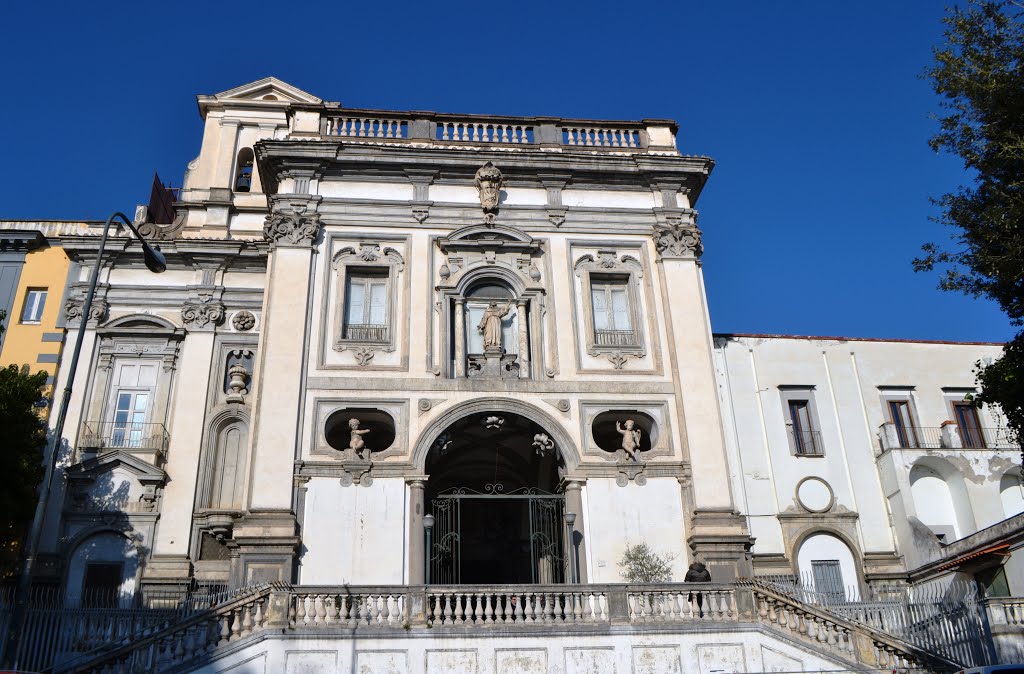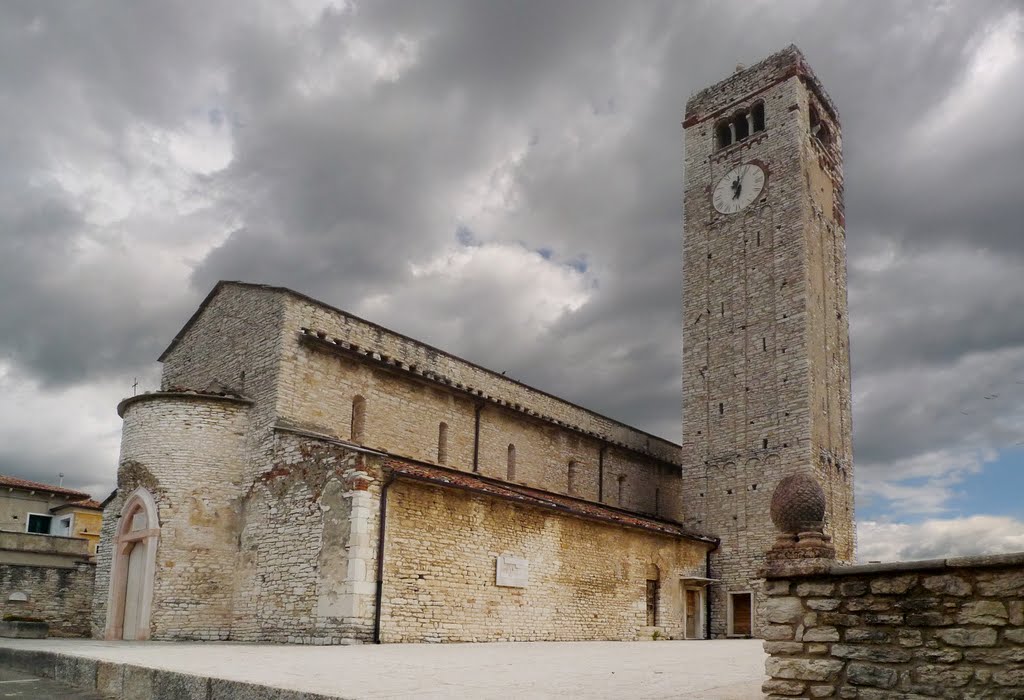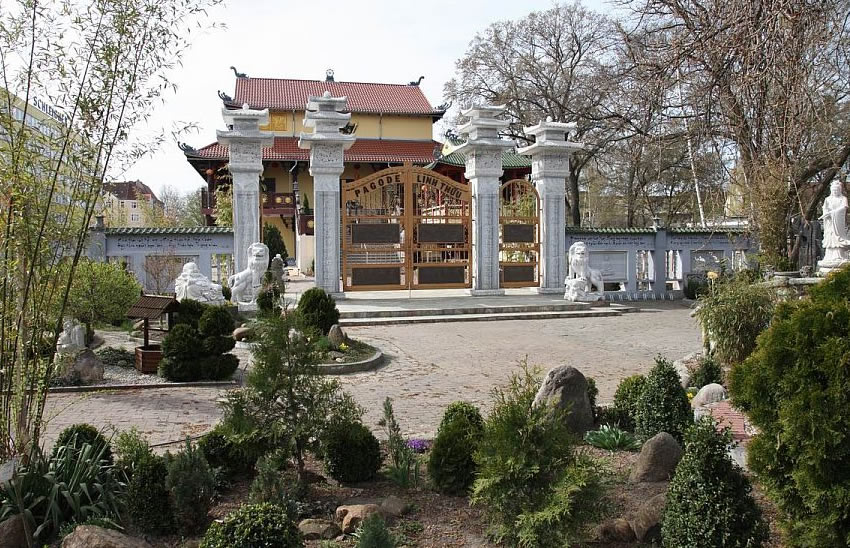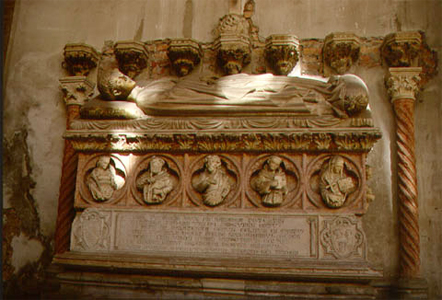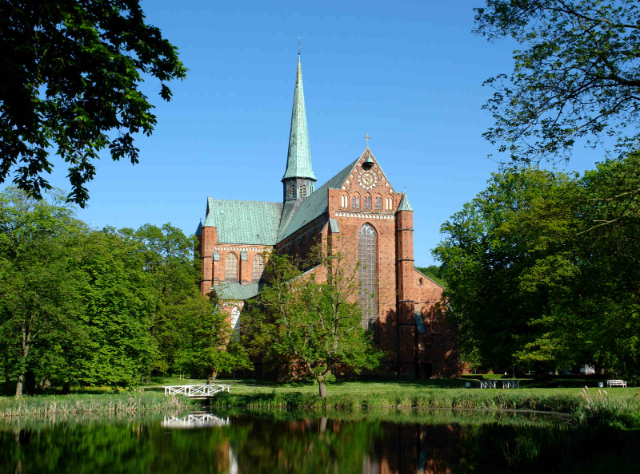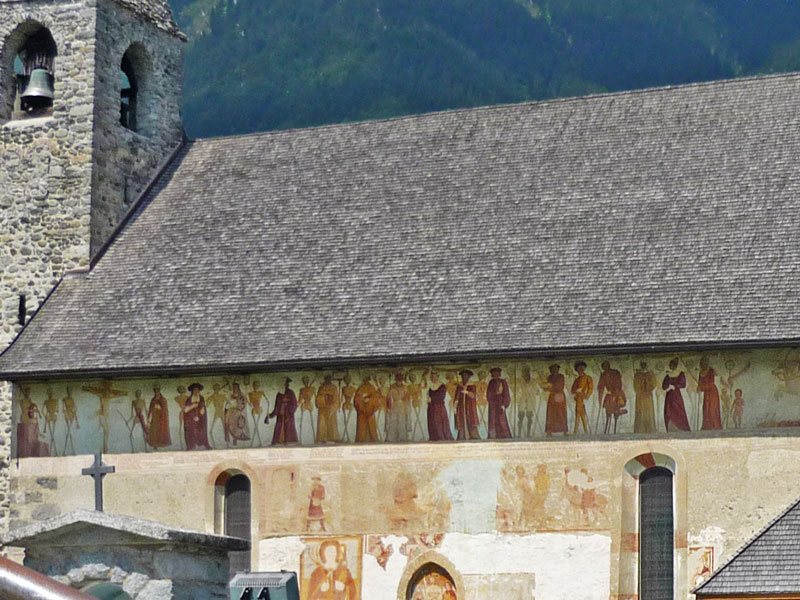The Church of Santa Maria degli Angeli alle Croci is located in Via Veterinaria. The building, built together with the adjoining convent in 1581 by the Observant Franciscans, earned its name "alle Croci" because of the crosses (later removed in the mid-nineteenth century) that marked the stations of the Cross along Via Michele Tenore leading to the church. Later, after the reform of the order, the convent was transformed into a college and the complex, including the church, were modernized by Cosimo Fanzago between 1639 and 1647. Around the middle of the seventeenth century, in fact, the minister general of the then Order of the Observants, then merged into the Minors of Santa Chiara of Spaccanapoli, Fra’ Giovanni da Napoli, commissioned the architect to revise the entire structure in a baroque style. Fanzago’s intervention was not so invasive as to completely change the sixteenth-century plant, but, as far as the church is concerned, the most noticeable change was to add the atrium with a double facade to support the choir. The structure of the church slavishly follows the dictates of the Franciscan order, such as the almost total absence of the bell tower, formed only by a simple "accommodation" for two bells, the division of the interior into three distinct areas (one for celebrations, in which the high altar and a majestic pulpit stand out, the use of balustrades to separate the side chapels from the nave (later largely removed in the sixties of the twentieth century) and, finally, the absolute lack of color in the facade as a sign of respect for the poverty of the order.\The facade, built with symmetrical precision, has a central arch with two architraved side elements, with the entrance portal surmounted by the statue of St. Francis of Assisi, attributed to Cosimo Fanzago who would have made it for the Church of Santa Maria La Nova ai Banchi Nuovi; other sources, however, want that the sculpture was carved by Father Grisanto Gagliucci from Cilento, and brought to the current position at the behest of Fra ‘Giovanni da Napoli. The cherub on the left is also by Fanzago (the one on the right is a copy of the stolen original), while the side openings, originally opened to guarantee a perspective effect of depth, were walled up in the middle of the 19th century, a period of great transformations for the church and for the whole complex. To these years, in fact, dates back the addition of the staircase that anticipates the entrance of the church. Inside, among the architectural elements of prominence there is certainly the high altar, behind which stands a magnificent tabernacle of the sixteenth century with angels in bas-relief made by Cosimo Fanzago. In the antependium, instead, was realized a valuable bas-relief by Carlo Fanzago, Cosimo’s son, representing the Dead Christ.Inside the church, there were several wooden statues, carved by Giovanni da Napoli and fra’ Diego da Careri, many of which have been lost; of those that remain, we must point out those of the Angels at the sides of the altar and the one representing San Francesco d’Assisi with wings, by fra’ Diego da Careri, placed in the third chapel on the left. \(napoligrafia.it)
